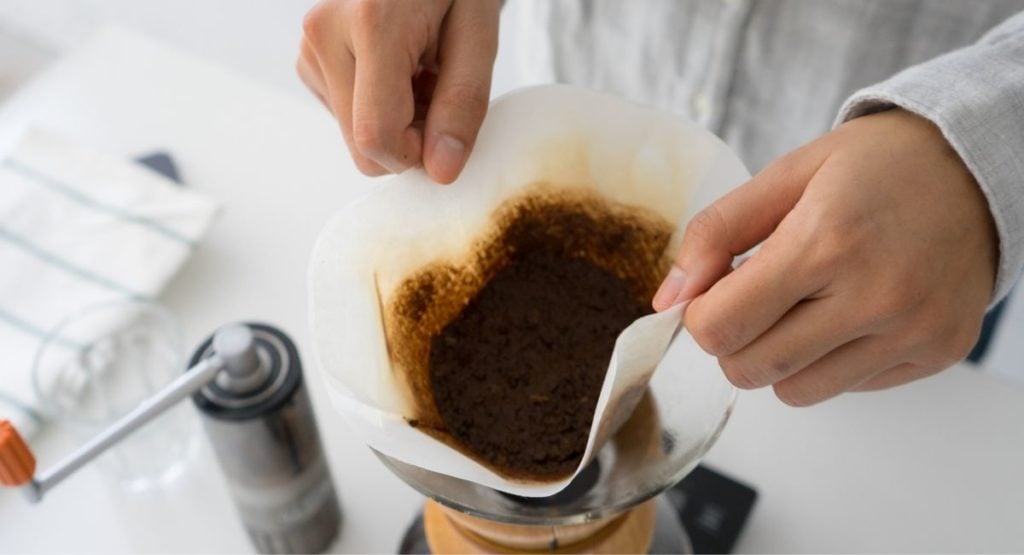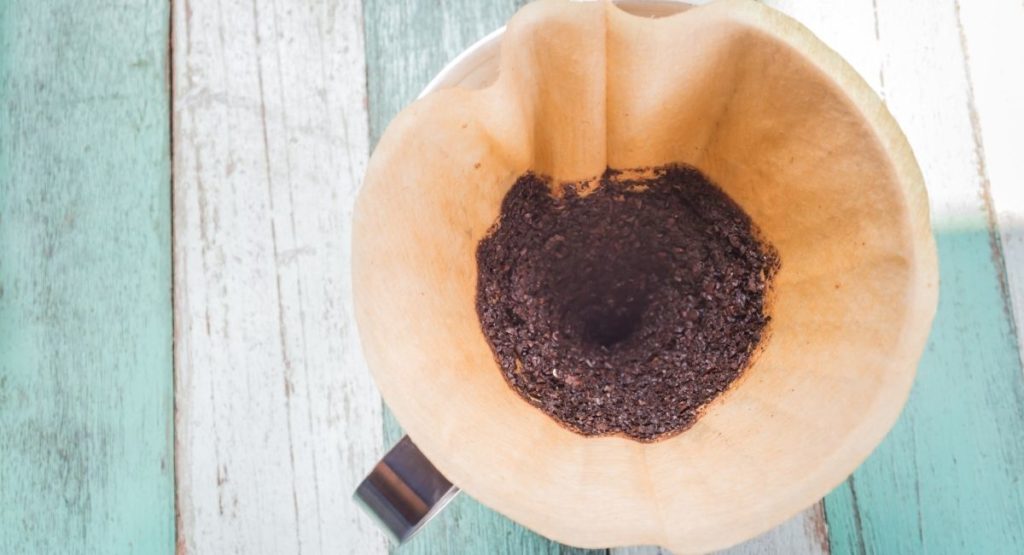Can You Reuse Coffee Grounds for Cold Brew? Why or Why Not?
This post may contain affiliate links. If you make a purchase through a link I may earn a commission. As an Amazon affiliate I earn from qualifying purchases.
Throwing away your coffee grounds is a natural but painful part of the cold brew coffee-making process. However, you might have wondered about the possibilities of reusing coffee grounds for your next round of cold brew. After all, it does use a LOT of coffee.
The upshot: You can reuse coffee grounds, but I don’t recommend it. Almost all the goodness and flavors of the coffee grounds are extracted in the first extraction.
Instead, try to stretch your coffee further. You can experiment with the hacks below to try to get a little more mileage from your coffee.

How to Reuse Ground Coffee
Here are two ways you can reuse coffee grounds for cold brew.
Method #1: Re-brewing Coffee Grounds
Re-brewing the same coffee grounds creates a weak brew, so instead we will re-brew half of our coffee grounds with some fresh coffee.
You can stretch your coffee 50% further with this method.
Important: As you read the instructions it may seem like this is a bit like a sourdough starter method, but we do not want to do this infinitely. Each batch will deteriorate in quality and flavor since each batch contains partially used coffee and there is no way to separate out the newer grounds from the older ones. Only brew a second batch as described below and then discard (or re-cycle) all of the coffee grounds.
1. Choose the Right Coffee Beans
Since you’re planning to reuse these beans, I suggest you go with a medium or dark roast coffee. Opt for a coarse grind for cold brew coffee.
2. Add the Water
Add your coffee grounds to a pitcher or mason jar. Add double the amount of water. So, if you are using 1/2 c. of coffee, add 1 c. of water.
3. Let the Coffee Grounds Brew
Soak the coffee in water for 10-12 hours. This is a little less than usual, but we don’t want to over-extract our coffee and leave nothing for our second batch.
4. Prepare Your First Serving
Strain your grounds from the water using a coffee filter, coffee sock, or cheesecloth. You should have a strong cup of cold brew, add water to dilute it as needed.
5. Prepare the Second Cup
Take half of the used coffee grounds and put them in a clean container (due to bacterial growth, I would start with a fresh, clean container although if you are brewing in the fridge you could rinse out your container and re-use it–your choice).
Add an equal amount of new coffee grounds and add water. Keep the same ratio as before–how ever much coffee is in your container, add twice as much water.
So, following the example above, we would have 1/4 c. of used coffee, 1/4 c. of new coffee and 1 c. of water. You can double or triple each of these amounts depending on how much coffee you want to make.
Let this mixture brew for 14-20 hours. Discard all of the coffee grounds after this brew!
Method #2: Preserving Coffee Grounds
With this method, we partially strain the coffee and then replenish the water.
1. Prepare a Concentrate
Soak the coffee grounds in water for a concentrated brew. Remember to use at least 50 to 75 percent less water than you usually put in your coffee. So instead of 1 part coffee and 3 parts water, use 1 part coffee to 2 parts water.
Example: 1 c. coffee grounds and 2 c. of water
Let the coffee soak in the water for at least 12 hours for the best taste. You can also put the container in the refrigerator and leave it overnight.
2. Prepare Your First Serving
Strain out some of the coffee liquid as a concentrate and dilute to taste. Add more water to the brewing container to bring the water level back to were it was before.
With this method, you are essentially brewing a concentrate, stealing a portion, and then adding back some more water and letting it brew longer.
3. Store the Remaining Brew
After the coffee has brewed up to 10-12 additional hours, you can strain it and store the remaining brew. The first glass that you have (in step 3) will be a nice strong concentrate but the second brew will be a little weaker and may need little to no dilution to be drinkable.

Things to Keep in Mind When Reusing Coffee Grounds
Before you reuse coffee grounds for your next round of coffee, make sure you tick these off your checklist:
1. Don’t brew it for too long, especially the first batch. If you over-extract the coffee grounds, it will turn your coffee bitter. A good way to reduce the bitterness is to cut down on brew time, and only re-use your grounds once.
2. Reused coffee grounds are more likely to be flavorless and dull. You can avoid this by using rich-flavored beans right off the bat.
3. It’s best not to have high expectations from reused coffee grounds. These methods will give you satisfactory coffee in a pinch, but certainly not as good as fresh grounds.
Parting Shots
Can you reuse coffee grounds for cold brew? You can try, but the second extraction will be weak and not particularly tasty. Instead, try to stretch your coffee grounds rather than try to get two batches from them.
Quality aromatic coffee beans and grounds can make a homemade coffee comparable to a professional coffee shop. That’s why I don’t recommend reusing coffee grounds if you want a a great cup of coffee. But if you’re left with no other choice, I hope the techniques mentioned above will come in handy to stretch your coffee grounds further.



